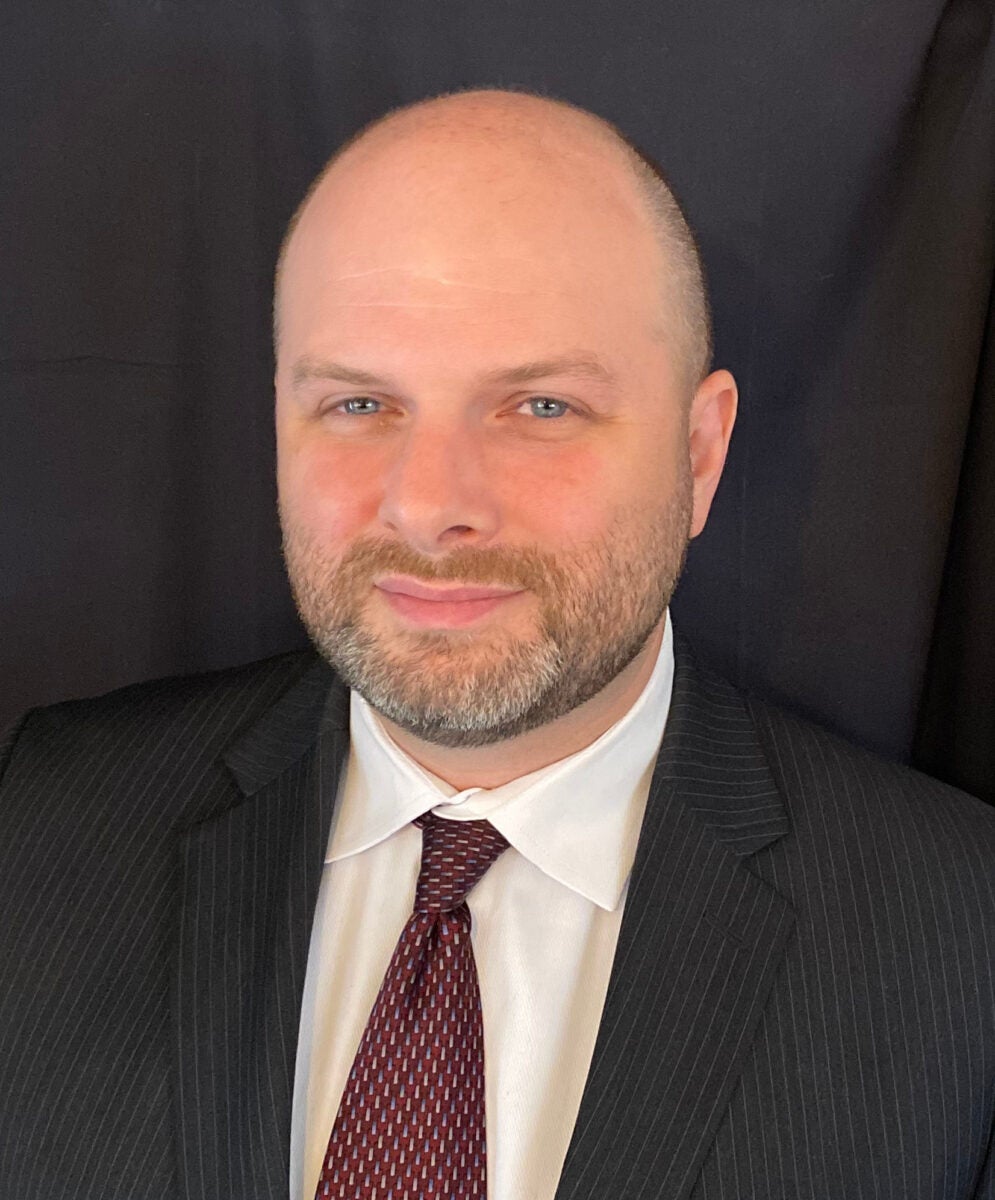The views expressed here are solely those of the authors and do not necessarily represent the views of FreightWaves or its affiliates. Jake Medwell, founding partner at 8VC, and Loren A. Smith Jr., president of Skyline Policy Risk Group, discuss key industry topics for this regular quarterly Q&A exclusively on FreightWaves.
By Jake Medwell and Loren Smith
JAKE MEDWELL: The new infrastructure bill is now law. As signed by President Biden on Nov. 15, it will ultimately spend $1.2 trillion. What will that mean in practice? Are we going to have a bunch of new bridges and ports popping up in January? That would be pretty awesome.
LOREN SMITH: That would be very awesome, but it’s going to move a little more slowly than that. While the Infrastructure Investment and Jobs Act — the bill’s official name — spends money through several different federal agencies, the one that’s really most on point is the U.S. Department of Transportation.
There are three areas of focus at DOT to think about as we zero in on your question of “what will it mean”: discretionary grants, permitting reform and new regulations.
• Grants — The discretionary, or competitive, grant programs are a smaller portion of the spending but will give the administration the opportunity to influence the types of infrastructure projects that get funded.
• Permitting — Permitting reforms and process reforms are ways we might see project delivery potentially speed up. The sooner an infrastructure project is done, the sooner you unlock the economic benefits of it.
• Regulations — On regulations, the administration has an aggressive plan on technology, climate and other areas that will certainly be important to keep watch on.
JAKE: Let’s start with the grants, the actual dollars.
LOREN: Most of the funds in the bill are formula funds, meaning they get sent more or less directly to the state DOTs. Formula funding was increased slightly in the bill, and this is the part of the bill that has the broadest support. Not as exciting, but important — keeps the existing programs running smoothly.
However, the more interesting impact is likely to be from discretionary, or competitive, grant programs. Of the $1.2 trillion in the bill to be spent over five years, as much as $120 billion is competitive programs run by the department. Basically, Secretary Buttigieg and his team will have the opportunity to pick the winners, although there are criteria they have to follow.
That’s important because if you have a thousand applicants and you get to pick just a hundred winners, it really allows you to make a significant imprint based on your policy priorities.
JAKE: So if the administration just wanted to send all the money to, say, West Coast ports, they could?
LOREN: No, the discretion isn’t that broad. Each program, and there are dozens, has a series of criteria that Congress has written into the laws that authorize every action. If an agency ignores any of them, there are all kinds of unpleasant things that happen from oversight investigations to congressional hearings. If you’re an agency head, even if your political party controls Congress, you don’t take those things lightly.
However, the criteria aren’t perfectly restrictive, and there is some discretion. We should expect to see a group of winners that broadly promote administration priorities on climate policy and equity. Transit infrastructure, smart cities, EV charging infrastructure, extreme weather resilience, maintenance — these are areas we should expect to get a special emphasis in the next round of grants.
JAKE: And when do we find this out?
LOREN: The big round of winners from the RAISE grants will likely be announced in August or September of 2022.
JAKE: Why then?
LOREN: Well, it’s partly political. The administration is going to want to unveil the winners in advance of the midterm congressional elections on Nov. 8, 2022. And for various reasons they won’t do it, like, the day before, but doing it two months out should be well-received.
Watch: Loren Smith discusses Washington policies
JAKE: Is it a heavy lift to get the awards out by then?
LOREN: It actually will be pretty tough. First, you have what they call the NOFOs — notices of funding opportunity. For each grant competition, a NOFO goes out, triggering an application period — usually 60 days — for applicants to get in their requests. The department is certainly working on these right now. You want to get those out as soon as possible and get through the 60 days so you can get down to the business of sorting out the applicants.
The first stage is a review by the career civil servants at the department, and principally the economists. They spend a huge amount of time drilling down into each project to sort out the economic impact of the projects and just reading through the applications to see if they make sense on a basic level. Then they assign a rating, typically broad categories such as highly recommended, recommended and not recommended. This is the most grueling part of the process and it takes a lot of diligent work by the team.
Then the leadership of the various agencies within the department gets involved to sort through some of the cross-modal concerns that you might have about rail/highway junctions and things of that nature. An effort is made to make sure the rewards are going to be spread out geographically. Rural/urban considerations have to be satisfied.
JAKE: But at the end, the sausage gets made and the grants go out.
LOREN: Right. And because the pots of money in these discretionary grants are larger as a result of the new law, it’s worth watching how that plays out.
JAKE: You mentioned permitting reform. Getting infrastructure projects through the process is always a huge time commitment. What might be changing here?
LOREN: Hopefully we’ll see some incremental improvements. Congress included One Federal Decision in the infra bill, which is an initiative to force agencies to cooperate better on environmental impact statements. A few months ago, that looked encouraging. However, the language in the bill ended up being watered down, and it’s unclear how much bandwidth will be committed to this area by the agencies.
However, there are definitely opportunities to improve the permitting process. Many of the Biden administration appointees were in office during the Obama administration, and the two major infrastructure bills enacted under Obama, in 2012 and 2015, both had important reforms to nudge the agencies toward better coordination. So this shouldn’t be unfamiliar territory for them.
It’s also worth noting that the administration has a strong interest in getting this right. Persuading the public that the infrastructure bill was a great win for the country will be a lot easier if you can speed up project delivery, for the simple reason that the visible progress of breaking ground is always good news.
JAKE: So we aren’t super-optimistic about permitting reform over the next year or two, but some positive changes are possible?
LOREN: That’s right. Eventually the U.S. is going to figure this out, but it may still be a ways off.
JAKE: OK. What about the regulatory issues?
LOREN: The administration has put a huge priority on climate issues and climate policy. On transportation and infrastructure, the strategic play on vehicles continues to be shifting from internal combustion vehicles to electric vehicles. The regulatory work on this is arguably the top priority of both DOT and EPA.
For infrastructure specifically, climate advocates are looking at more resiliency for infrastructure. Essentially, this means hardening against extreme weather events.
DOT is also working on an update to the Manual on Uniform Traffic Control Devices (MUTCD), and that may be published sometime in 2022 or possibly 2023. The next update will be the first since 2009 and likely will include a lot of new thinking based on recent technology developments, including drawing on the smart cities concept.
The administration is also proceeding with closer scrutiny of autonomous vehicles and automated driver assist systems. Driven by concerns over job losses, NHTSA (the vehicle safety regulator) is casting a wary eye at self-driving systems. NHTSA is more favorable towards specific systems such as Automatic Emergency Braking (AEB), and in fact the regulatory priority for NHTSA in the AV space is to develop a mandate for AEB.
JAKE: And that will certainly impact trucking as well.
LOREN: Oh for sure. And the dynamic over job losses, even though it’s several years off, is part of the story too.
JAKE: Closing question: Will we see these regulations finalized in 2022? Will they be litigated?
LOREN: The main fuel efficiency mandate for cars and light trucks is probably a 2022 story. Automatic Emergency Braking may take a bit longer — in general, because of the length of the regulatory process, administrations tend to think in terms of four-year horizons. The Biden team knows that they have four years to finish their projects, and maybe they’ll be here in 2025, or maybe they won’t.
So expect late 2023 and early 2024 to be a big year for regulations to be getting finalized. Like other administrations, they’ll avoid putting things out in late 2024, as the legal regulatory process includes mechanisms for revoking “midnight regulations,” or regulations finalized at the last minute.
JAKE: Good to know. And on that note, we hope everybody has a happy holiday season!
LOREN: See you in 2022!
About the authors

Jake Medwell, founding partner of 8VC, focuses on both consumer and enterprise investments. A serial entrepreneur who has spent his life building and scaling companies, he also leads 8VC’s logistics and transportation focus. Prior to launching 8VC, Medwell co-founded Humin, a consumer mobile software company where he built the engineering team and led growth. He also co-founded The Kairos Society, where he sits on the board of directors. While in college at the University of Southern California, he founded Sole Bicycle Co. and grew it into an industry leader. Most recently, he co-founded Operation Masks with partner Drew Oetting to help bring personal protective equipment to medical workers on the front line of the fight against COVID-19.

Loren A. Smith Jr. is the president of Skyline Policy Risk Group. From 2017 to 2021, he worked at the Department of Transportation as deputy assistant secretary for policy. There, his leadership included serving as DOT’s chief environmental review permitting officer; chair of the management team for the ROUTES Initiative on rural transportation; and as a member of the task force on regulatory reform, including leading efforts on supersonic aviation. From 2009 to 2016, he was an analyst for Capital Alpha Partners, a Washington-based research firm that studies public policy for investors. He specialized in transportation policy, particularly relating to autos and infrastructure, and published more than 500 research notes.











